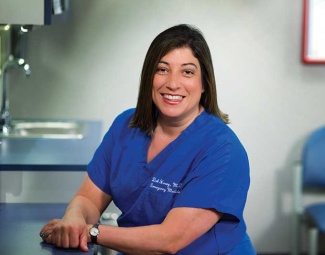“I saw both the impact that these injuries had on my patients when I was treating them in the ER, but I also saw the long-term consequences of these injuries,” said Houry. “Many of these injuries were preventable, and with the medical and public health education I received at Tulane, I wanted a career where I could focus on the prevention of these events.”
Today, Houry serves as director of the National Center for Injury Prevention and Control at the Centers for Disease Control. In this capacity, she focuses her work on combating the opioid overdose epidemic, among other critical issues such as suicide and child maltreatment.
Impression: Debra Houry
Many doctors train to become emergency room physicians, hoping to save lives. But serving in this role for Debra Houry (M ’98, PHTM ’98) wasn’t enough. She wanted to help stop injuries before they ever happen.
Many doctors train to become emergency room physicians, hoping to save lives. But serving in this role for Debra Houry (M ’98, PHTM ’98) wasn’t enough. She wanted to help stop injuries before they ever happen.
From car crashes, falls and assaults to suicide attempts and overdoses, Houry said she’s treated them all while practicing emergency medicine.

During her tenure at the CDC, Houry oversaw the release of “Guidelines for Prescribing Opioids for Chronic Pain,” which gives providers the best available evidence for managing patient opioid prescriptions.
Portions of the guide have since been adopted widely by many states and insurance companies. Many medical societies have extended their endorsement.
“We have seen high-risk prescribing patterns for overdose, such as prescribing high morphine milligram equivalents, and cases of multiple prescribers going down,” said Houry. “This will save lives.”
Last fall, Houry visited Tulane for a discussion on the role of providers and those who serve on the frontlines.
“It is our responsibility to talk with patients about opioid-use disorder and to provide or refer them for treatment when necessary,” said Houry.
While much has been done to study the opioid epidemic, Houry said there’s still much to do.
Among those next steps, she said, are improving the link to care for patients who have overdosed, increasing access to naloxone for those who are at risk of overdosing, and expanding guidance on the safe prescribing of opioids for procedures such as dental pain and surgeries.






























































